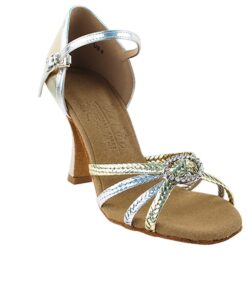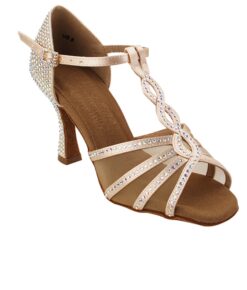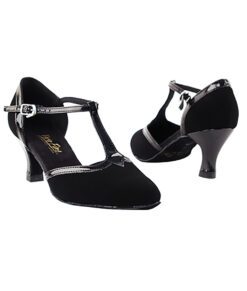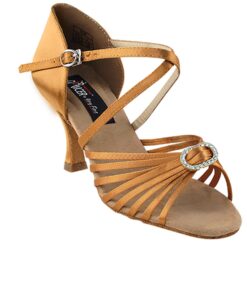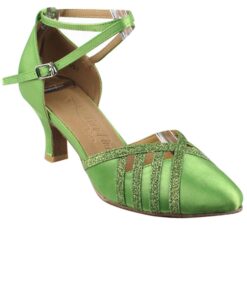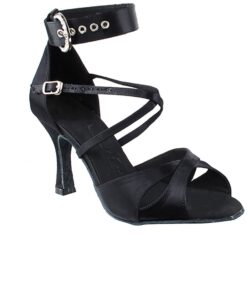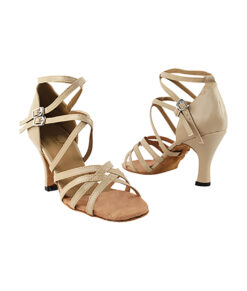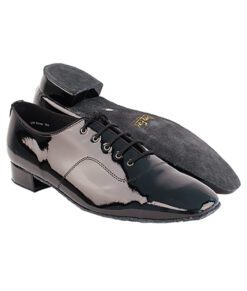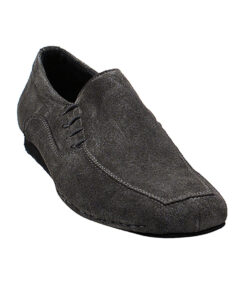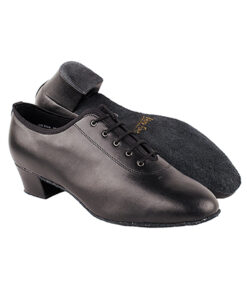Performance Prep
How to choose a dance studio: The complete guide for a beginners
Engaging in new hobbies, in general, might be an overwhelming experience until the person is not assured of the appropriate beginning. You have now decided to learn international standard ballroom dancing, and your journey ahead is promising in terms of offering great development, physical fitness, social life, confidence, and overall well-being. On the other hand, before being in a position to twirl around the dance floor, the first step is the proper selection of the right dance studio. This guide will walk you through basic considerations that will help find the best dance studio for your needs wherever you might reside.
Why Choosing the Right Dance Studio Matters
The dance studio you choose can make a big difference in how well you learn to dance and how much fun you have while learning. A proper studio will engage your focus on ballroom dancing for fun, to keep fit, or eventually for ProAm competitions. Here’s why:
- Quality of Instruction: This studio should use only the highest-quality instruction, which is very important in starting to learn ballroom dance. Experienced instructors will carefully walk you through proper techniques so that you can have good foundations in your learning.
- Atmosphere: The environment of the dance studio should be open and inviting. You should feel comfortable and motivated to learn, no matter what level you are at.
- Community: Most dance studios have a strong sense of community wherein you may find lasting friendships and supportive networks with people of similar values and interests.
- Resources and Opportunities: A good studio will be able to provide you with resources that will help you grow as a dancer and open up performances, competitions, and workshop opportunities.
1. Define Your Goals
Before one embarks on searching for a dance studio, it is paramount that one determines exactly what one aims to achieve from the studio: Will you be dancing just for fun, or perhaps later on, you would like to compete? Do you only want to train in international-standard ballroom, or are you open to training in other styles?
Recreational vs. Competitive Goals
If the objectives are just to have fun, stay active, and meet new people, then attending a more casual dance studio is best. Such studios are usually focused on various group classes in different dance styles. They thus would be great for those enjoying social dancing or wanting to try something different for a change.
If you are serious about entering ProAm and other dance competitions, seek one that majors in competitive dancing. Studios that offer private lessons with instructors to prepare you for competitions and advance into training programs and competitive events will be the focus of attention here.
2. Research Studios Online
After setting your goals, it is time to do some research about dance studios around your neighborhood. The first move is to search online for dance studios that teach the style of dance you are interested in. Most studios have websites or social media pages listing class descriptions, instructor profiles, prices, etc.
Key Factors to Consider:
- Instructor Experience: Look for studios with instructors with extensive experience teaching the dance style you’re interested in. Check if they have any certifications or competitive achievements that demonstrate their expertise.
- Class Variety: A good studio should offer classes catering to different skill levels, from beginner to advanced. This allows you to progress at your own pace and continue to be challenged as you improve.
- Schedule and Location: Consider the studio’s location and class schedule. Ideally, it should be conveniently located and offer classes at times that fit your schedule.
- Pricing: Dance classes can vary significantly in cost. Look for studios that offer transparent pricing and consider whether they offer package deals, discounts for multiple classes, or free trial lessons.
3. Visit the Studios
After narrowing down your options, it’s time to visit the studios in person. This will give you a better sense of the studio’s atmosphere, facilities, and overall vibe. Most studios welcome prospective students to observe a class or participate in a trial lesson.
What to Look For During Your Visit:
- Cleanliness and Maintenance: A well-maintained studio with clean floors, mirrors, and changing areas reflects its commitment to providing a professional and safe environment for its students.
- Class Size: Pay attention to the size of the classes. Smaller class sizes often mean more personalized attention from the instructor, which can be particularly beneficial for beginners.
- Instructor-Student Interaction: Observe how the instructor interacts with the students. Are they patient and encouraging? Do they provide clear instructions and constructive feedback?
- Studio Atmosphere: The overall vibe of the studio is essential. Do you feel comfortable and welcomed? Is there a sense of camaraderie among the students?
4. Consider Group vs. Private Lessons
Another important decision you’ll need to make is whether to start with group classes, private lessons, or a combination of both. Each option has advantages, and the right choice depends on your goals, budget, and learning style.
Group Classes
Group classes are a great way to learn dance basics in a social setting. They’re usually more affordable than private lessons and offer the opportunity to meet other dancers. Group classes are ideal for beginners who want to learn in a fun, low-pressure environment.
Pros:
- Cost-effective
- Social interaction with other dancers
- Exposure to different dance partners and styles
Cons:
- Less individualized attention
- May progress at a pace that’s too fast or too slow for you
Private Lessons
Private lessons provide one-on-one instruction tailored to your specific needs and goals. They’re ideal for dancers who want to progress quickly, focus on specific techniques, or prepare for competitions.
Pros:
- Personalized instruction
- Flexible scheduling
- Faster progress
Cons:
- More expensive
- Less social interaction
5. Evaluate the Community and Opportunities
The dance community at a studio can greatly enhance your experience. Some studios have a strong sense of community, with students who support and encourage one another. They may also offer opportunities to participate in social events, performances, and competitions.
Questions to Ask:
- Is there a sense of community? Look for studios that foster a positive and inclusive environment where students feel welcomed and supported.
- Are there growth opportunities? Ask about performance opportunities, dance showcases, and competitions. These experiences can help you develop as a dancer and gain confidence.
- What other resources are available? Some studios offer additional resources such as access to dancewear, social events, or workshops with guest instructors.
6. Check for Trial Classes or Introductory Offers
Many dance studios offer trial classes or introductory packages for new students. These options allow you to try out a class or a few classes at a discounted rate before committing to a longer-term program. Taking advantage of these offers can give you a better sense of whether the studio fits you.
7. Trust Your Instincts
Finally, trust your instincts when choosing a dance studio. You should feel excited and motivated to learn in the studio. If something doesn’t feel right, it’s okay to keep looking until you find a studio where you feel comfortable and supported.
8. Prepare for Your First Class
Once you’ve chosen a studio, it’s time to prepare for your first class. Here are a few tips to ensure you start on the right foot:
- Dress Appropriately: Wear comfortable clothing that allows you to move freely. Depending on the type of dance, you may need specific shoes, such as ballroom or jazz shoes.
- Arrive Early: Arriving a few minutes early will allow you to meet the instructor, settle in, and familiarize yourself with the studio.
- Be Open-Minded: Remember, everyone was a beginner at some point. Be patient with yourself, and don’t be afraid to ask questions or ask for help.
9. Reassess Your Needs Over Time
As you continue your dance journey, it’s important to reassess your needs and goals periodically. Your initial choice of studio might be perfect for learning the basics, but as you improve, you may find that your needs change. Don’t hesitate to explore other studios or instructors if you feel you’re not progressing as you’d like or if your goals shift towards more advanced training or competitive dancing.
Conclusion
Choosing the right dance studio is a crucial step in your dance journey. By defining your goals, researching studios, visiting them in person, and considering the type of lessons that suit you best, you’ll be well on your way to finding a studio that matches your needs. Remember, dance is not just about learning steps; it’s about enjoying the process, connecting with others, and expressing yourself. Take your time to find a place where you feel at home and excited to learn.
After selecting your studio, all that’s left is jumping in and dancing! Whether you’re pursuing dance as a hobby or aiming for the competitive stage, the proper studio will provide you with the support, community, and resources to make your dance dreams a reality. Happy dancing!



